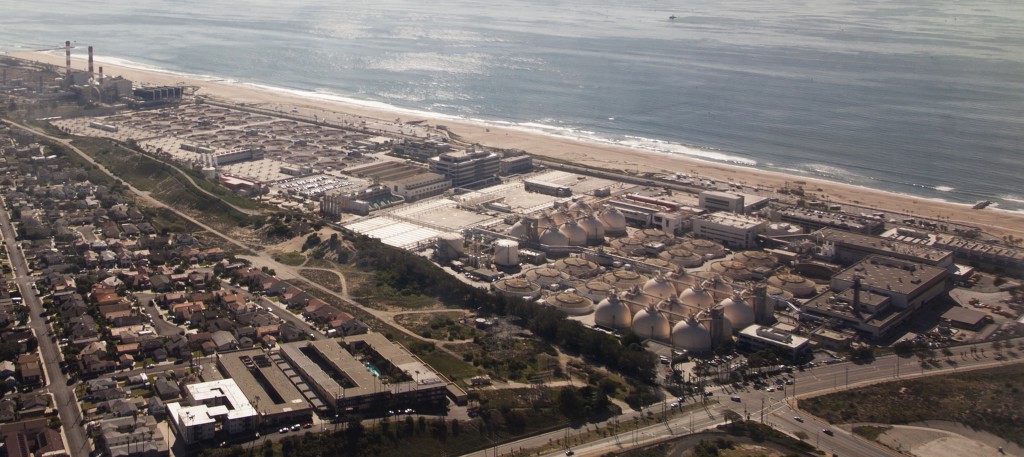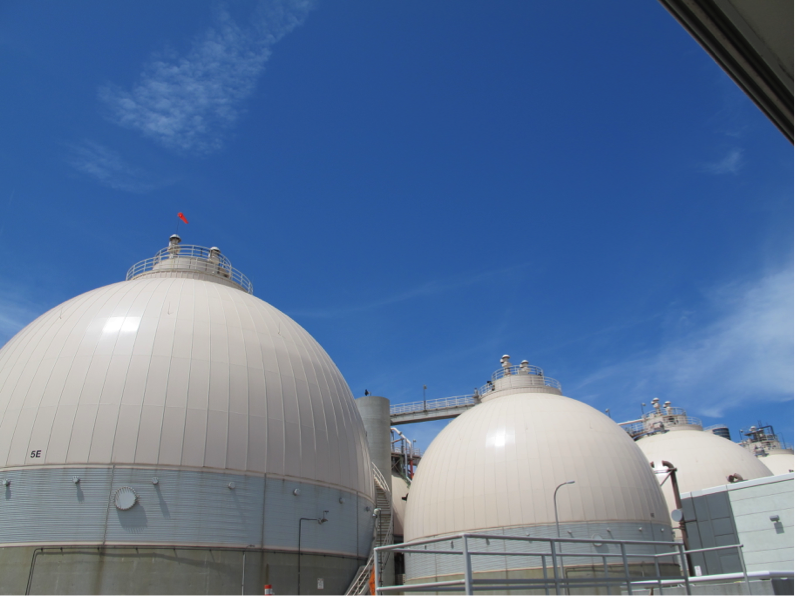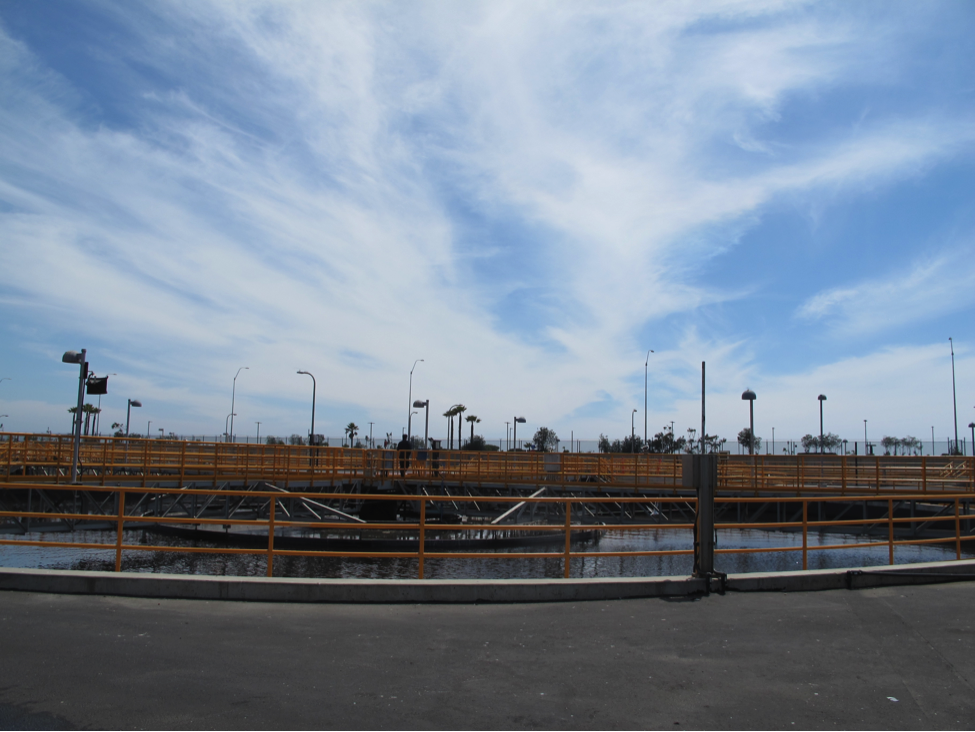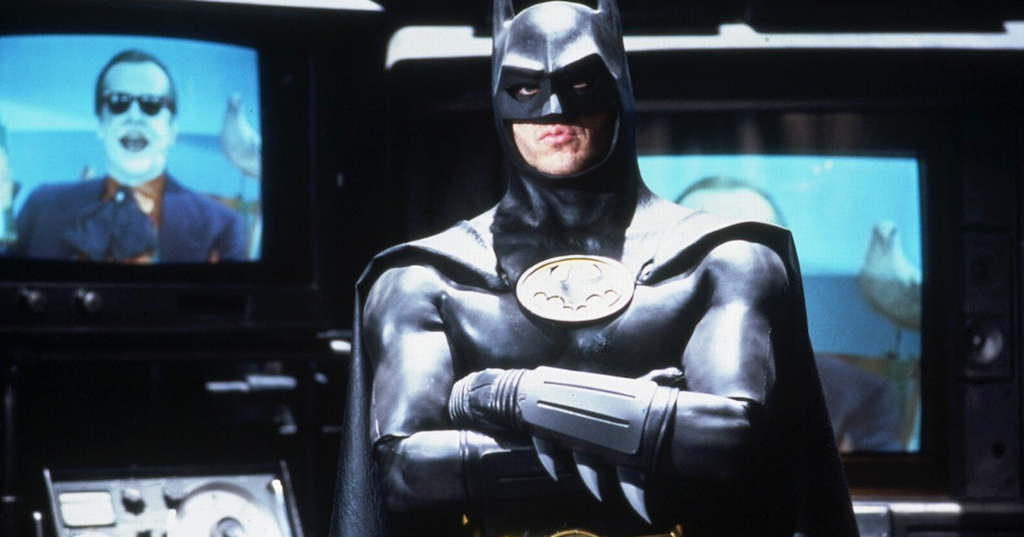Where Farce Turns Into Something Else

When we endorsed Donald Trump in this space last month it was just before all the exact same experts who had sworn up and down that he was never going to run in the first place — and if he did run it would only be for a few minutes — started screaming as loudly as they could in their expert way that we were now right on the very edge of American fascism. So who knows? Maybe this time they’re calling it correctly. Or maybe if you’re finally concerned enough to panic about a Republican message that has only been conveyed in slightly more subtle tones until now the problem might be more with the way in which you choose to articulate your own expertise? And also perhaps the same Constitution that keeps anything from getting done at present would continue to prevent anything from getting done no matter what kind of blustery bullshit the next president tried to sling about? It’s a big mystery, I guess. Anyway, Awl pal Patricia Lockwood spent some time on tour with the Trump experience, and you should read about it here. As we’ve said before, in this precise context, what an amazing age in which we live, for however much longer that continues to be the case.
Rising Explained
If you’re looking to read only one thing about Ireland’s Easter Rising, the centenary of which was celebrated in front of Dublin’s General Post Office yesterday, go with Colm Tóibín’s “After I am hanged my portrait will be interesting” in the current London Review of Books. It is rather long, but it is one of those rare pieces which warrants the length, so carve some time out for it when you have a chance.
Secrets Spilled
Most successful creative professionals, if they’re being honest, will tell you, “I work hard, but the work itself is not actually that hard”
— Heather Havrilesky (@hhavrilesky) March 28, 2016
Awl pal Heather Havrilesky — pre-order her forthcoming Ask Polly collection now! — is telling some terrible truths here. See also: “Read some stuff online. A lot of it is bad. See? Not very hard at all to do this.” Anybody who tells you how difficult it is doesn’t want you to realize what a scam they’ve got going. Creative people are mostly creative at making you think what they do is both onerous and mystical, when really the magic is that people buy into their self-mythologizing bullshit.
Report: Man Mean In Middle School
Thank God Republican intransigence will prevent Merrick Brian Garland from taking the seat to which he has been nominated on the United States Supreme Court, because according to a guy who has been nursing a 50-year-old grudge, the chief judge of the United States Court of Appeals for the District of Columbia Circuit was kind of a dick in junior high.
Happy Piano Day!
It sounds a hell of a lot more hopeful than “Happy rainy-ass Monday,” right? Anyway, it’s the “annual worldwide celebration founded by a group of likeminded people around Berlin based composer Nils Frahm. In the same tradition as it’s inaugural launch in 2015, Piano Day takes place on the 88th day of the year — this year 28th March — because of the number of keys on the instrument being celebrated.” Here is a pretty extensive playlist from Awl favorite Frahm himself which is almost ideal for a rainy-ass Monday. Enjoy!
New York City, March 24, 2016

★★★ The four-year-old in his heavy pajamas radiated heat and slumber, but outside was a cold breeze. Everything gleamed. People who’d dressed overconfidently walked with their arms folded against the chill. All day, stepping out the door brought on the same painless shock.
The App-to-Table Restaurant

Despite the seeming multitude of delivery startups buoyed by an ocean of venture capital right now, there are really only two: a platform that allows thousands existing restaurants to get their food to people’s doors (Seamless, UberEats, PostMates, etc.) and a fully integrated machine that produces vast quantities of food in a central commissary, then delivers it to people as efficiently as possible. Maple, whose pitch is that it makes fairly healthy, fairly tasty food, created with input from chefs like David Chang and engineered to stand up to the rigors of delivery, is the best-known example of the latter. The point of this Fast Company profile of the delivery startup is largely to marvel at its growing efficiency:
When Maple launched its first location in April, it served around 50 meals per hour at peak times. Less than a year later, on average it is now serving 800 meals per hour from each of its four kitchens. A few days before I visited in February, it had set a new record: 1,100 meals cooked and delivered in one hour.
This is above and beyond the current “gold standard” of three hundred meals per hour, or one every twelve seconds, set by Chipotle. It sounds, one might think, disruptive, particularly set against the backdrop of the other efficiencies wrung out of its business model, like a greatly reduced staff (no servers!), the lack of a need for prime real estate, and finely tuned logistics coordinating everything soup to nuts, from the preparation of the food to the routes of its couriers. (These seem like minor advantages, but this is basically the recipe for how to build an establishment that will survive the capital-powered hurricane that is sweeping through the San Francisco restaurant scene.) Witness the triumph of predictive software over the Way Things Used to Be Done in the neverending battle for Greater Efficiency:
When Maple started, it based its kitchen technology on existing restaurant procedure. Its kitchen operating system centered on an app with a drag-and-drop interface that moved orders from “cooking,” “plating,” and “ready to be bundled for delivery” status, much like a paper ticket that moves down a cook line at a diner. But, says Maple cofounder and COO Akshay Navle, “It was a total waste of time to have the cook do anything other than cooking.” Now, there’s a separate app that shows cooks the predicted demand for orders (using simple machine learning techniques that base forecasts on past performance and menu mix), another that helps workers who plate dishes keep the system updated on the number of completed meals available, and a third that shows workers who bundle orders for delivery what to pack in which courier’s bags. Nobody needs to drag and drop.
This is how, Maple CEO Caleb Merkl tells Fast Company, he will be able to feed the same number of people as forty Chipotle locations with only seven Maple kitchens. “We’ve built a machine,” he says.
What is peculiar about about such an efficient machine is all of the inefficient pieces that remain inside of it, which is to say, the humans. Without getting into specific timelines about when it becomes technically feasible for certain kinds of jobs to be automated — that scale, for most jobs, is obviously measured in years or decades — what can be said, generally, is that a job is at risk of automation when it becomes cheaper or more efficient, overall, to let a machine do it instead. This is why, for instance, it is thought that busboys have little to worry about: The task would be technically difficult to automate, given that it requires a fair amount of manual dexterity and grace to clear tables while weaving, with good manners, around humans — meaning any robot that could do it would probably be expensive at the outset, so why not just keep paying the busboy minimum wage?
This is all to point out that, while an army of robot cooks is not the next step in Maple’s plan to disrupt eating or whatever, Maple is not just more incentivized than most restaurants to automate away its human work force, it is architected in such a way that automation, as it becomes technically feasible and sufficiently cost-effective, would be far easier to implement — and not just the bike messengers who will be replaced by drones as soon as Amazon’s lobbying efforts succeed. 😬
Maple’s food is highly standardized and produced at extreme volumes, and it wants — needs? — to produce it at ever-higher ones; its production, in fact, is already largely controlled by predictive software, so that the human cooks there now are, crudely speaking, algorithmically directed meat puppets. Importantly, because Maple is more like a factory than a traditional, customer-facing restaurant, replacing its cooks with Chef Boyardrones would be unlikely to cause its diners too much discomfort: Its food, like the smartphone they ordered it from, is produced entirely out of sight, so the reality of how their order is prepared or gets to them is safely obscured. Even better, no humans would be harmed in the making of this grain bowl. It’s a recipe for app-to-table cooking at its finest. 🙃
The Effluent Society
by Sayd Randle

Here’s a story that sounds like a joke with a foul punch line. One day in 1939, Aldous Huxley, Thomas Mann, and two women walk along the shore south of Los Angeles. The weather is beautiful, the beach is empty, and Shakespeare is debated. Then the group realizes that something’s funny about the beach. As Huxley put it in the essay, “Like Hyperion to a Satyr,” they are suddenly walking among “ten million emblems and mementoes of Modern Love … Malthusian flotsam and unspeakable jetsam.”
The four had found themselves among a sea of used condoms that ejected by Los Angeles’s Hyperion sewage treatment plant. Huxley returned to those shores a few years later, after L.A. upgraded the plant in 1950. He was overjoyed with what he saw, and what he thought the vista suggested about the city:
[A]nother torrent, this time about 99.95 percent pure, rushes down through the submarine outfall and mingles, a mile offshore, with the Pacific. The problem of keeping a great city clean without polluting a river or fouling the beaches, and without robbing the soil of its fertility, has been triumphantly solved.
In most of his writing, Huxley is an ambivalent cheerleader, at best, for the wonders of high modernist technology. But as this excerpt suggests, something about the new Hyperion quieted his critical side. He depicts the plant as an unambiguous boon, and more significantly, the triumphant solution to the age-old problem of dealing with the ongoing disaster of human waste in the city. The boundaries between pollution and the rest of the metropolis are portrayed as impermeable thanks to the construction of this hyper-modern treatment plant, separating the cityscape from its own wastes once and for all.
Evolving notions of the nature of a healthy, well-managed city have animated public conversations about Hyperion and the condoms, shit, hypodermic needles, and even “lethal superbugs” the plant has dumped into the Santa Monica Bay over the past century. Describing the plant’s salubrious (or destructive) effects on L.A. shorelines has long served as a way to talk about far more than just unsightly beach trash. Since Hyperion became an object of attention in Huxley’s day, issues of public safety and spatial governance have also slid, implicitly or explicitly, into discussions of how L.A. should manage its sewage, and debates about Hyperion have been shot through with ever-shifting ideas about what it means to build and maintain a genuinely flourishing metropolis. Angelenos’ demands of the treatment plant, in other words, have long indexed a set of shifting expectations for what the urban environment can and should be.

When the first Hyperion treatment plant began operations in 1924, it was hailed as a dramatic improvement from the previous arrangement, which was no treatment at all. Up to that point, L.A. had deposited its sewage directly from the sewer into the ocean, through an outfall pipe in the southern L.A. beach community of El Segundo. The new facility, constructed next to the old outfall, used simple screens to filter the wastewater flowing in from the sewer network, dumping the outflow into the sea through a submarine concrete pipe; city workers buried the screened detritus in nearby sand dunes. Few saw the setup as ideal, but it was in line with the technological and sanitary norms of the time. Dilution — of the inflowing sewage by the ocean — was assumed to be an adequate solution to the problem of pollution.
Unfortunately, the population boom that began in the nineteen-twenties quickly overwhelmed Hyperion’s cleaning capacity. Under the stress of unplanned-for volumes of waste, the pipe depositing the screened sewage into the sea disintegrated rapidly, springing leaks within yards of the coastline; as early as 1925, sewage was visible on the beaches. In 1941, the L.A. Times was moved to publish a three-part series on the “health menace” produced by the city’s derelict wastewater conveyance and treatment infrastructure. The system was described as “overloaded, antiquated, cracked, disintegrated.” In one article, a plant engineer states that only “3 to 5 percent” of solids were removed from the waste stream at Hyperion before being pumped into a “a leaky tunnel to be distributed on the bathing beaches.” Two years later, after outbreaks of dysentery among beachgoers, the health officers enacted a quarantine on ten miles of beaches along the southern Santa Monica Bay. The L.A. Times headline that appeared — “Council Acts Belatedly to End Sewer Menace” — captures Hyperion’s image as a public health enemy.
By 1945, when L.A. voters finally approved a major bond to fund improvements to Hyperion, the sewage industry standard had evolved to “advanced primary treatment,” which relies on a combination of screens and settling tanks to remove solids from the wastewater. But L.A.’s waste managers chose to do something unprecedented for a metropolis of its size: provide “secondary treatment” for all of the city’s wastewater. In secondary treatment systems, sewage flows through several screening assemblies, settling ponds, aeration, and, finally, clarification tanks, in addition to receiving a thorough chlorine dousing. This long series of mechanical and biological processes produces dramatically cleaner effluent to dump into the ocean than old Hyperion’s simple screens ever did. The solids removed in the treatment process, known as sludge, are then processed in anaerobic digester tanks for separate disposal. Unsurprisingly, opting for secondary at this scale was staggeringly expensive, and the city had to pass further bond measures in the late forties to complete the project as designed. Early in the process, engineering consultants hired by the city warned that if L.A.’s population continued to expand, sewer inflows would quickly exceed the plant’s planned capacity of two hundred and forty-five million gallons per day at the secondary treatment level. These critiques were ignored, and construction proceeded apace.
In The Infrastructural City, architectural theorist Kayzs Varnelis goes so far as to suggest that “infrastructure is the only theology that really took hold in the American West.” This statement may be pushing it, but the point is well taken, when one looks at popular representations of the newly renovated Hyperion. Ted Niederhofer, Chief Inspector of the Los Angeles Board of Public Works, was floored by his tour of the Hyperion construction site in 1949. “When you go there, you’re going to see something that is unlike any project in the world,” he gushed. “You could spend a week looking it over … When you have finished, you will see that it is not a mere engineering project. You will see that it is an engineer’s dream come true. It has lines and designs that are sheer perfection. You will see that as a physical, man-made thing it has beauty.”
Aware of this appeal, and eager to rehabilitate Hyperion’s public image, when city officials deemed the first section of the new plant ready to begin operations in 1950, they decided to put on a show for reporters. In front of more than two thousand citizens, L.A. Mayor Fletcher Bowron beamed as he smashed a bottle of champagne against one of the plant’s check gates as the treatment infrastructure gurgled in the background. The spectacle garnered a top-of-the-fold story in the next morning’s L.A. Times, which optimistically predicted plant’s effectiveness: “virtually all of the contamination [of the beaches] is expected to be eliminated.”
The visual language of a July 29 L.A. Times pictorial spread echoes this enthusiasm, and leaves the reader awed at the scale, cleanliness, and space-age aura of the plant. An aerial shot of the entire operation and a photo of a worker cleaning the massive row of aeration tanks sit above images of detergent bubbles and inspectors examining their reflections in the clear water of the settling tanks, while captions trumpet the end of the beach quarantine. Hyperion, in this moment, is a truly solid, formidable barrier between the city and its own waste. Huxley’s delight in the plant makes sense: Hyperion appears to be a stable technological assemblage capable of making beach-flotsam a sickening menace of the distant past.
Engineers loved, visited, and wrote about the plant, too, but read it somewhat differently. Roger Sutherland, a Milwaukee Sewerage Commissioner, made a pilgrimage to the plant in November 1951 and penned an op-ed about his visit for the L.A. Times. After praising Hyperion’s state-of-the-art technology, beautiful grounds, and competent management, Sutherland went on to suggest the next steps: Reworking the sludge production part of the plant to make it capable of producing more fertilizer, and upping the water treatment steps another notch to allow for the “salvage” of the wastewater in the name of re-use within the city. Contra Huxley, Sutherland doesn’t frame the Hyperion he toured as the definitive, triumphant solution to the city’s torrent of wastewater, but as just another innovation in a long line of coming, inevitable improvements. Two strands of thinking seem to underpin this position: a characteristic mid-century faith in engineering’s ability to bring a better future into being, and an instinct to understand infrastructure as an ongoing process rather than a fixed achievement.

Within a few years of the new Hyperion’s completion, it became apparent that the consultants had been right: L.A.’s population and sewer flows were increasing steadily, and would soon overwhelm the plant’s infrastructure, leading to the kind of system disintegration and frequent spills that plagued the older, smaller plant. While the city’s beaches weren’t yet dirty again, it was clear that they could be again, and soon.
The city appointed a blue-ribbon commission to study ways to expand the plant’s treatment capacity. In October 1954, the group proposed a solution: The city should downgrade its treatment for most of the sewage flowing into Hyperion, but build a much longer outfall pipe from the plant. The panel argued that this fix would avoid the intimidating expense of expanding the plant’s secondary treatment capacity while minimizing the dangers from primary-treated sewage to beachgoers. Primary treatment would dominate at the plant, but at least citizens would have a bigger buffer from the dirtier water.
In the decade that followed, the city built both five-mile (for the effluent) and a seven-mile (for the sludge) sub-marine outfall pipes from Hyperion into the ocean. This was apparently enough distance between the outflow and the beach picnickers to put peoples’ minds at ease — the newspaper record reveals little in the way of outcry at the decision to downgrade the level of treatment for much of the city’s wastewater. The plant’s secondary treatment equipment still operated, but by the late sixties, only twenty-five percent of the incoming wastewater received its advanced cleansing. The one-mile outfall constructed for the 1950 plant was repurposed for an emergency overflow valve, through which raw (save for a splash of chlorine) effluent would be diverted in cases of power failure or overwhelming inflow. These shifts tripled the plant’s capacity — necessary for the burgeoning city — but represented a significant downgrade in the caliber of treatment most sewage received.
As these technological downshifts were taking place at Hyperion, another decline was underway. In the fifties, visitors had warmed to the plant’s color schemes and gushed over the interior colors and landscaping, designed to blend in with the surrounding sand dunes. But within a couple of decades, the landscaping was gone and the physical plant was run down. Day by day, Hyperion was becoming less a showcase of city pride and more an unpleasant space best avoided. Somewhat appropriately, in the early seventies, filmmakers used Hyperion to film climactic scenes in the dystopian sci-fi classic Soylent Green. In the movie, the plant serves as the set of the factory that processed human corpses into rations for a decaying, overpopulated city. Rather than functioning as a symbol of a cleaner, safer future enabled by technological wizardry, in the film Hyperion’s physical plant represents a dark, techno-skeptical, and even grimy vision of things to come.
Meanwhile, American expectations for — and legal constraints around — urban water quality were increasing, putting the declining Hyperion on a collision course with new norms. Historian Martin Melosi links the shift directly to the rising environmental, or “new ecology,” movement of the sixties, connecting the decline in the public’s faith in the inherent good of large-scale engineering projects with a rise in attention to the diffuse, often unpleasant effects of unrestrained development. In L.A., for instance, pride in the city’s massive freeway network was increasingly tempered by concerns over its ever-decreasing air quality — the dark side of the “progress” once symbolized by massive pieces of urban infrastructure like highways and Hyperion was becoming increasingly prominent.
The creation of the Environmental Protection Agency in 1970 and the passage of the Clean Water Act in 1972 can be understood as codifications of this new way of thinking (and worrying) about infrastructure and the urban environment. The CWA’s provisions presented a formidable gauntlet for cities across the nation. Among the most onerous new rules: the CWA’s requirement that all municipal sewage receive secondary treatment, the level of cleansing L.A. had largely abandoned in the fifties. These stricter standards for sewage re-entering urban environments after treatment reflected a waning tolerance for pollution within city spaces.
L.A.’s city government chafed under this new locus of responsibility, particularly its price tag. Estimates suggested that providing full secondary treatment for all of L.A.’s wastewater would cost well north of a billion dollars, an enormous sum for a city to source in the lean late seventies. Relying on the old “dilution is the solution to pollution” logic, city engineers argued that the Pacific Ocean was adequate to the task of diluting Hyperion’s primary treated flows, and thus they didn’t need to invest in expensive secondary treatment for all of the sewage. Things could be cleaner, yes, but they were clean enough at present. On this basis, the city applied for a waiver to exempt it from the standards in 1979, for which it received tentative approval in 1981. The approval was followed by a public hearing on the matter in 1985 that went off without much fanfare: A pair of dissenting environmentalists presented data on the destructive effects of Hyperion’s sludge dumping on fish population in the Bay, but no media outlets publicized their arguments, and members of the Regional Water Control Board appeared uninterested. CWA standards alone, it appeared, were not adequate to the task of keeping L.A.’s dirty water and aerated sludge out of the Bay.
High school English teacher Howard Bennett had never been interested in sewage treatment. He was, however, interested in swimming, which he did every morning in the Santa Monica Bay. The two issues suddenly intersected for him one morning in late March 1985 when he approached the ocean for his daily paddle. “The water’s poisoned!” an unfamiliar fisherman yelled to Bennett just before he entered the surf. The outburst struck Bennett as worrying enough to merit further investigation. By chance, he had encountered Dr. Rimmon Fay, a longtime Hyperion critic and one of the two critical speakers at the March 25th public hearing just a few weeks earlier. Recalling Fay’s interest in the health of the Bay, Bennett phoned him to discuss the “poison” — and promptly got shouted at. “There’s nothing you can do about it!” the dispirited Fay howled into the receiver when Bennett suggested that they fight the decision.
Undaunted, Bennett digging through the public record and concluded that the Bay’s water was, in fact, poisoned — dangerously sullied by the primary-treated water and sludge from Hyperion. He began working the phones, writing incendiary letters, and courting the media. His efforts won the “Coalition to Stop Dumping Raw Sewage into the Ocean” a second public hearing on Hyperion that May. Much of the back and forth at these meetings was between Fay and Dr. Willard Bascom, head of the Southern California Coastal Water Research Project, and it was about fish and worms. Fay contended that what Hyperion dumped from its outfalls was denuding the waters of both volume and variety of marine life. Bascom argued that the sewage was excellent fish food, and that the current ecological community was not necessarily better or worse than those of the past, just different.
Bascom’s position took a serious hit when one of his employees reported that his boss had doctored data to support the spurious “ideal fish food” argument. Nevertheless, while the Times dutifully recounted the conflicting sets of scientific evidence under discussion at the hearings, it was Bennett’s outraged interpretation of the plant’s failures that inspired heated prose and drew crowds:
The general public has been treated like a child … and has been given a false sense of security by the entire sewage disposal industry. As an English teacher it is clear to me that the sewage industry uses euphemisms to pacify the public and fool them into thinking they’re doing a good job … The sewage industry talks about its ‘primary treatment process.’ This is another euphemism. It is separation of the big pieces and not treatment at all. The general public is not to be fooled like a child. They understand that what is left after separation is still raw sewage.
Most engineers would quibble with Bennett’s interpretation of primary treatment, but protesting it is obviously less about the fish than about a government that refuses to maintain an appropriate set of relations between people and pollution, between the city’s waste, guts, and environment.
The mobilizing power of such perceived failures to respect boundaries becomes apparent with a glance at the series of L.A. Times articles on the sewage spills that plagued the city in the months following the hearing. Between July 12th and 20th, untreated sewage drained steadily from a temporary storage receptacle into the city’s concrete-lined Ballona Creek, overspilling this last-ditch boundary-securing device and depositing a total of over three thousand gallons of the mess. A story about the sewage in the storm drain ran on the front page of the Westside edition of the Times on July 21. Shortly afterward, mayor Tom Bradley finally entered the fray, reversing course and announcing plans to undertake exactly what his administration had been fighting for nearly a decade. “To achieve our goal of the cleanest possible Bay, we are determined to install a full secondary treatment system at the Hyperion Waste Treatment Plant,” Bradley stated in a press release. The $2 billion gauntlet had finally been taken up: The waiver plan was dead, and Hyperion would return to its former full secondary capacity after all.
On December 8th, 1998, Hyperion re-entered the modern era and the media spotlight. As the L.A. Times put it, the plant “is for the first time fully meeting pollution standards set 26 years ago by the federal government.” The American Public Works Association named the plant’s full-secondary, sludge-out operation to its (unranked) list of top ten American civil engineering projects of the century, but not without noting the mid-century backslide. The upgrade was represented as an accomplishment (impressive in scale), but always also as a much-belated achievement of the legally mandated bare minimum.
The final act of Hyperion’s twentieth century story can be read as parable about the potential political power of a public that feels threatened: Dumping lightly treated water five miles from the shore and raw sewage in the storm drain both sound disgusting, but they’re unlikely to cause an outbreak of dysentery, or even a sea of condoms on a popular beach. The media outrage, public response, and eventual political capitulation spurred by this transgressed boundary suggest just how unacceptable such an overflow is in the contemporary U.S., and how much these norms and expectations (of cleanliness, and of a city and its infrastructure to produce that cleanliness) have shifted since the forties. But as expectations for what a city government should be doing to protect public space from contamination have grown, faith in the technologies, engineers, and bureaucratic systems tasked with these responsibilities has crumbled. Which raises the question: What kinds of wastewater management arrangements will the public demand in the future, and what technologies and institutions will be deemed adequate to guarding the crucial boundaries between people and their wastes?
According to Google Maps, the Edward C. Little Water Recycling Facility is a seven-minute drive from Hyperion. The proximity is not a coincidence: some of Hyperion’s secondary-treated wastewater is piped over to the Little facility, where it receives additional cleaning (micro-filtration and reverse osmosis and extra disinfection) for large-scale industrial and landscaping uses. At the time of this writing, the Little water isn’t being mixed into anyone’s potable water supply, but, according to strategic planning documents and Ron Wildermuth, the facility’s public relations point person, that is the long-term plan, pending public support and adequate funding.

One chilly evening in August of 2013, I joined a group tour the facility to get a firsthand view of the attempt to win hearts and minds to the fraught notion of sipping highly treated sewage. The audience was engaged, frequently interrupting with questions (When does the plant smell worst? Where else do people drink their own wastewater? What tests does the water undergo?). Wildermuth managed the onslaught with aplomb, calming nerves with his obvious competence and confidence in the plant’s operations. Heads nodded when he detailed the contours of L.A.’s looming water supply crisis (chief among the justifications for expanding the plant’s operations), and few seemed to lose interest during his exhaustive explanation of the treatment technology. No one looked disgusted, and most chuckled at the laugh lines, like when Wildermuth suggested that Little water was so healthy and pure that it would leave drinkers looking like models.

Standing on the edge of the treatment platform as the ocean breeze whipped my hair into my eyes, I peered out in the direction of Hyperion and thought of Huxley. If we were walking through the facility together, what asides and interpretations would he toss my way? He’d probably be pleased to note the lack of Malthusian flotsam, and find Wildermuth’s quirky narration of the plant’s processes fairly charming. But I doubt he’d be speaking in terms of triumphant, universal solutions to the age-old problem of dealing with sewage in cities. Widespread uptake of wastewater recycling is one potential future, but it’s certainly not inevitable. The Little facility represents a relatively new, arguably brave paradigm for sewage management, one that many environmentalists find exciting. I count myself among that number — re-using effluent makes sense from both environmental health and water supply angles, particularly in arid places like the L.A. Basin. Thanks in part to California’s ongoing drought, Angelenos and their water managers increasingly agree. The L.A. Department of Water and Power’s recent draft Urban Water Management Plan calls for a dramatically expanded water recycling program in the years to come. But a positive public reading of this plan is far from guaranteed, or necessarily stable. As Hyperion’s history suggests, both the material stuff and the meaning of infrastructures are surprisingly fluid, given all the concrete involved.
Top photo by Doc Searls
Do You Love Crosswords?
by Awl Sponsors

Hello. Do you love challenging and innovative crossword puzzles? Would you like to try out what are, very probably, the best, freshest crosswords in any venue? We thought you might! Awl contributor Ben Tausig and the crew at The American Values Club are now offering a package of four free AVCX puzzles nominated for best-of-the-year awards — including Brendan Emmett Quigley’s “Heads of State,” which CrosswordFiend.com recently praised as a rare achievement that “only he and a handful of others” could pull off.
So how does it work? Simply visit this page and enter your email address to begin receiving mind-bendingly excellent crossword puzzles. You can also access AVCX puzzles via a variety of apps on iOS and Android.
Some Batman Movies, Ranked

1. Batman: Mask of the Phantasm
2. Batman (1989)
3. The Dark Knight
4. Batman Beyond: Return of the Joker
5. Batman Returns
6. Batman Begins
7. Batman (1966)
8. Batman: Subzero
9. Batman: Mystery of the Batwoman
10. Batman: Year One
11. The Dark Knight Returns — Part 1
12. The Dark Knight Returns — Part 2
13. Superman/Batman: Public Enemies
14. Superman/Batman: Apocalypse
15. Under the Red Hood
16. The Dark Knight Rises
17. Batman Forever
18. Batman v Superman
19. Batman and Robin
